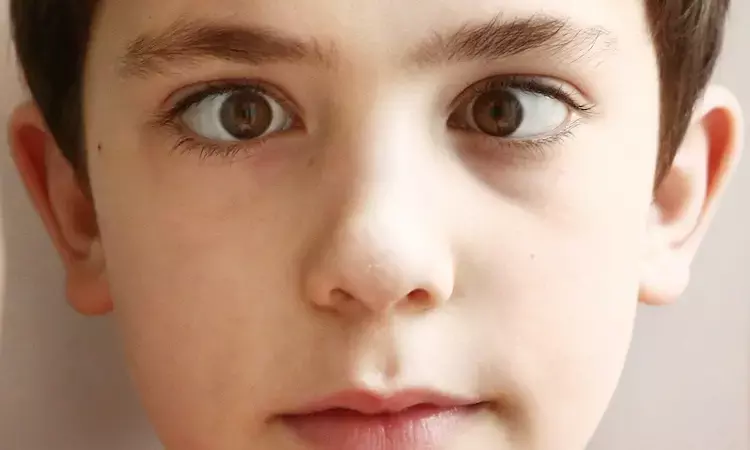- Home
- Medical news & Guidelines
- Anesthesiology
- Cardiology and CTVS
- Critical Care
- Dentistry
- Dermatology
- Diabetes and Endocrinology
- ENT
- Gastroenterology
- Medicine
- Nephrology
- Neurology
- Obstretics-Gynaecology
- Oncology
- Ophthalmology
- Orthopaedics
- Pediatrics-Neonatology
- Psychiatry
- Pulmonology
- Radiology
- Surgery
- Urology
- Laboratory Medicine
- Diet
- Nursing
- Paramedical
- Physiotherapy
- Health news
- Fact Check
- Bone Health Fact Check
- Brain Health Fact Check
- Cancer Related Fact Check
- Child Care Fact Check
- Dental and oral health fact check
- Diabetes and metabolic health fact check
- Diet and Nutrition Fact Check
- Eye and ENT Care Fact Check
- Fitness fact check
- Gut health fact check
- Heart health fact check
- Kidney health fact check
- Medical education fact check
- Men's health fact check
- Respiratory fact check
- Skin and hair care fact check
- Vaccine and Immunization fact check
- Women's health fact check
- AYUSH
- State News
- Andaman and Nicobar Islands
- Andhra Pradesh
- Arunachal Pradesh
- Assam
- Bihar
- Chandigarh
- Chattisgarh
- Dadra and Nagar Haveli
- Daman and Diu
- Delhi
- Goa
- Gujarat
- Haryana
- Himachal Pradesh
- Jammu & Kashmir
- Jharkhand
- Karnataka
- Kerala
- Ladakh
- Lakshadweep
- Madhya Pradesh
- Maharashtra
- Manipur
- Meghalaya
- Mizoram
- Nagaland
- Odisha
- Puducherry
- Punjab
- Rajasthan
- Sikkim
- Tamil Nadu
- Telangana
- Tripura
- Uttar Pradesh
- Uttrakhand
- West Bengal
- Medical Education
- Industry
Refractive errors in children closely related with horizontal strabismus, finds Study

Strabismus, the anomaly of ocular alignment which can involve either eye and can occur in any direction. They are classified according to the direction of deviation: inwards (esodeviations), outwards (exodeviations), and upwards or downwards (vertical deviations). Researches are gaining new momentum on decrypting the association of Strabismus with other ophthalmic causes.
According to a new study, refractive error is closely related to exodeviation and esodeviation. When managing refractive errors, these risk associations should be taken into account. This study was conducted by Si Hyung Lee and team with the objective to look into the relationship between refractive error and horizontal strabismus using data from a Korean population-based survey. The findings of this study were published in Journal of American Association for Pediatric Ophthalmology and Strabismus.
The study included 22,887 people over the age of five who took part in the Korea National Health and Nutrition Examination Survey (KNHANES) between 2008 and 2011. Myopia, hyperopia, astigmatism, and anisometropia were the four types of refractive error. Multivariate logistic regression analysis was used to examine the relationship between refractive error and exodeviation or esodeviation.
The highlighted findings of this study are:
1. After controlling for potential confounders, the analyses revealed an increased odds ratio (OR) for exodeviation with an increasing trend depending on myopia severity; moderate myopia, OR = 1.75; severe myopia, OR = 2.01.
2. Exodeviation was not linked to hyperopia.
3. Exodeviation was also found to be associated with astigmatism and anisometropia.
In conclusion the Authors said, "Refractive error was closely associated with exodeviation and esodeviation. These risk associations should be considered when managing refractive errors."
Reference:
Lee, S. H., Jung, S. J., Ohn, Y.-H., & Chang, J. H. (2021). Association between refractive errors and horizontal strabismus: the Korea National Health and Nutrition Examination Survey. In Journal of American Association for Pediatric Ophthalmology and Strabismus. Elsevier BV. https://doi.org/10.1016/j.jaapos.2021.07.012
Medical Dialogues consists of a team of passionate medical/scientific writers, led by doctors and healthcare researchers. Our team efforts to bring you updated and timely news about the important happenings of the medical and healthcare sector. Our editorial team can be reached at editorial@medicaldialogues.in.
Dr Kamal Kant Kohli-MBBS, DTCD- a chest specialist with more than 30 years of practice and a flair for writing clinical articles, Dr Kamal Kant Kohli joined Medical Dialogues as a Chief Editor of Medical News. Besides writing articles, as an editor, he proofreads and verifies all the medical content published on Medical Dialogues including those coming from journals, studies,medical conferences,guidelines etc. Email: drkohli@medicaldialogues.in. Contact no. 011-43720751


